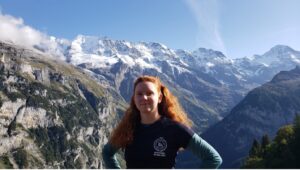
Two zoom presentations from students who recently received grants from the Society:
Join Zoom Meeting
https://us02web.zoom.us/j/83164648993?pwd=qpjEAzAERnDDZ0DUHVbEcSIMttjK3V.1
Meeting ID: 831 6464 8993
Passcode: 530340
Kiara Brooksby, Camborne School of Mines, Exeter University.
“Paragenetic evolution of tin-dominated lode systems in the Pool Mining District, Cornwall”
SW England hosts a world-class, W-Sn-Cu-As-Zn-Pb-Li ore field associated with the Early Permian granites of the Cornubian Batholith. In the Pool Mining District, which includes South Crofty Mine, magmatic-hydrothermal mineralisation is largely associated with steeply dipping ENE-WSW striking extensional fault systems (lodes). Recent drilling by Cornish Metals has included boreholes that intercept the principal South Crofty lodes and the Great Flat Lode. This study provides a paragenetic sequence and characterisation of mineralising fluids through detailed core logging, optical microscopy, QEMSCAN (quantitative evaluation of minerals by scanning electron microscopy) imagery, hot cathodoluminescence (an optical and electromagnetic phenomenon in which electrons impacting on a luminescent material such as a phosphor, cause the emission of photons which may have wavelengths in the visible spectrum), microthermometry and LA-ICP-MS (Laser Ablation Inductively Coupled Plasma Mass Spectrometry) analysis of fluid inclusions. It is the first such study of the South Crofty lode systems for 30 years. These new data, combined with historic descriptions, contribute to a revised model of tin mineralisation within the district.

Kiara obtained her Geology/Earth Science BSc at the University of Glasgow in 2019 before moving onto the University of Exeter, where as a Richard Osman scholar, she obtained an MSc in Mining Geology. In 2021 she began her current PhD research at the Camborne School of Mines, Exeter University.
Ella Davis, Department of Geosciences, Virginia Tech.
“Tectonic transport directions and timing of metamorphism in the southern part of the Northern Highlands Terrane, Scotland”
Determining the tectonic histories of ancient mountain belts presents an interesting challenge as we cannot measure the motion and characteristics of collision during mountain building and instead must decipher affected rocks to deduce tectonic evolution. Analyses of the deformed and metamorphosed units in the Northern Highlands Terrane in NW Scotland has played an integral role in understanding the large-scale tectonic evolution of the Scottish Caledonides. However, most of these studies on the deformation, metamorphism, and timing of mountain building events have been focused on the northern half of the terrane. We have extended these kinematic (movement) and isotopic studies to the south to better understand the tectonic transport directions and timing of metamorphism.
We have collected samples from four E-W transects crossing the Sgurr Beag thrust near Loch Monar, Glen Sheil, Kinloch Hourn, and Lochailort as well as from the “Flat Belt”, the structurally simpler eastern extent of southern NHT. Mineral fabrics in samples collected from the western transects show a top-down to the SE shear sense while those collected from the east show a top-up to the NE shear. Shear senses from these western fabrics contradict the shear directions that are well recorded in the north where there is a top to the NW shear sense. It remains to be determined what deformational event caused these different fabrics.
Analyses of U-Pb isotopic ages collected from titanite, monazite, and xenotime show multiple recorded periods of metamorphism in the southern NHT. Radiometric dating on samples from the northern NHT show that the region experienced multiple tectonic events, including the Knoydartian (870-720 Ma) and Caledonian orogenies, the latter divided into Grampian (~475- 460 Ma) and Scandian (~435-420 Ma) events. Our preliminary data shows a Caledonian period of metamorphism ranging from ~450-415 Ma and earlier Knoydartian-related metamorphic events ranging from 750-690 Ma.

Ella is a second year Master’s Student at the Department of Geosciences, Virginia Tech where her undergraduate research focussed on quartz microstructures from samples collected in north-western Scotland under the direction of Dr Richard Law. This led to further research to determine tectonic transport directions and deformation environments using small-scale shear structures and quartz fabrics.